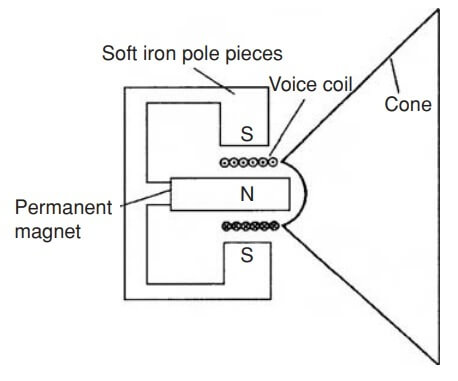If a current-carrying conductor is placed in a magnetic field produced by permanent magnets, then the fields due to the current-carrying conductor and the permanent magnets interact and cause a force to be exerted on the conductor. The force on the current carrying conductor in a magnetic field depends upon:
- The flux density of the field, B teslas
- The strength of the current, I amperes,
- The length of the conductor perpendicular to the magnetic field, l metres, and
- The directions of the field and the current.
When the magnetic field, the current and the conductor are mutually at right angles then:
Force F = BIl newtons
When the conductor and the field are at an angle θ° to each other then:
Force F = BIl sin θ newtons
Since when the magnetic field, current and conductor are mutually at right angles, F = BIl, the magnetic flux density B may be defined by B = (F)/(Il), i.e. the flux density is 1 T if the force exerted on 1 m of a conductor when the conductor carries a current of 1A is 1 N.
Loudspeaker
A simple application of the above force is the moving coil loudspeaker. The loudspeaker is used to convert electrical signals into sound waves.
Figure shows a typical loudspeaker having a magnetic circuit comprising a permanent magnet and soft iron pole pieces so that a strong magnetic field is available in the short cylindrical airgap. A moving coil, called the voice or speech coil, is suspended from the end of a paper or plastic cone so that it lies in the gap.
When an electric current flows through the coil it produces a force which tends to move the cone backwards and forwards according to the direction of the current. The cone acts as a piston, transferring this force to the air, and producing the required sound waves.

| Read More Topics |
| What are electromagnets? |
| Magnetic field due to an electric current |
| Capacitors connected in parallel and series |
| EMF and internal resistance of cell |





